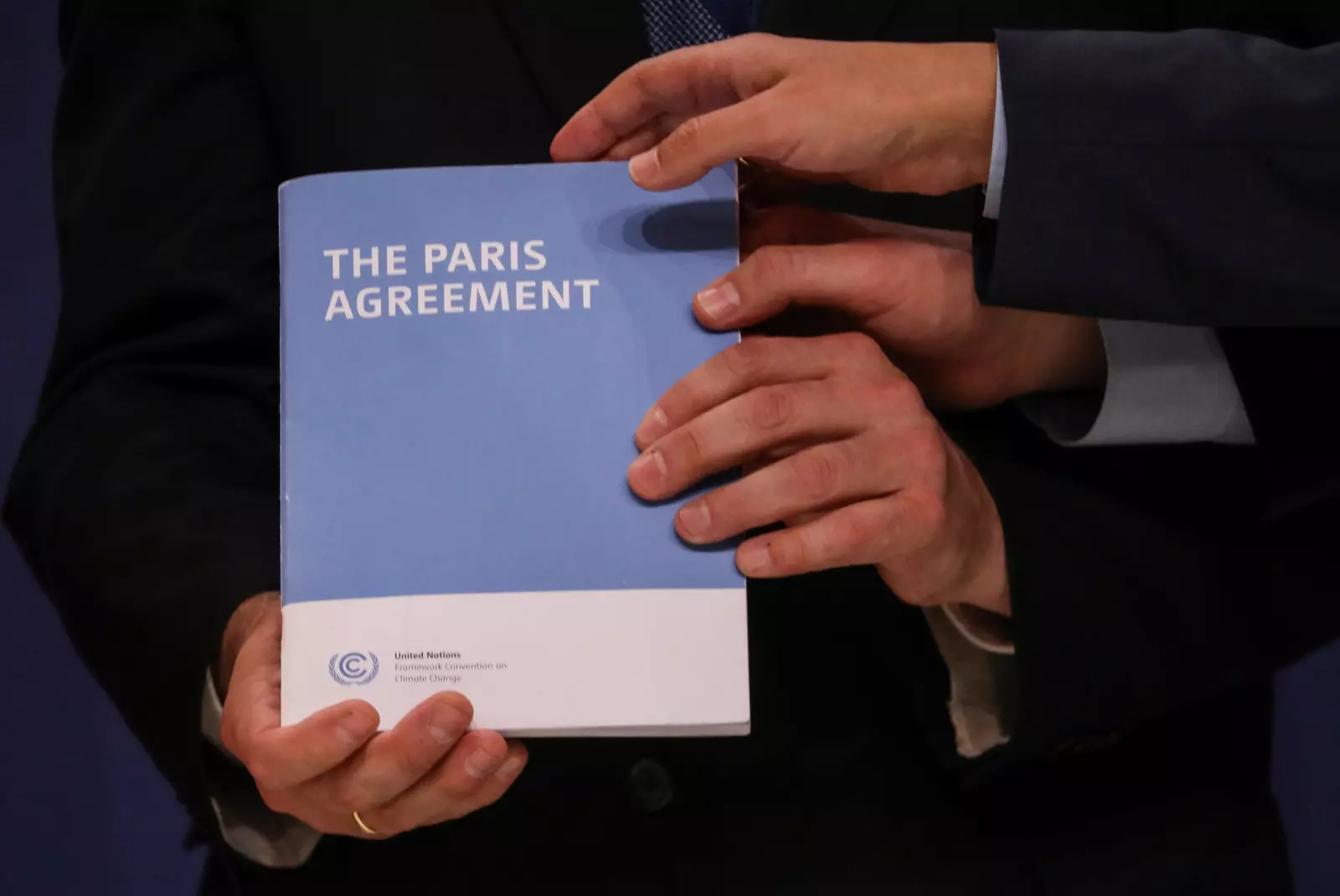How the advertising industry can drive demand for a low-carbon lifestyle

Advertising has the power to persuade people to adopt low-carbon lifestyles
Image: Photo by Luca Bravo on Unsplash
Stay up to date:
SDG 13: Climate Action
- The Earth's climate is in crisis; it's reaching the point where it's beyond repair.
- There is still time to restore the Earth to a more healthy equilibrium, however, if we all switch to low-carbon lifestyles.
- The advertising and marketing industry has the power to encourage people to adopt low-carbon lifestyles and it must seize this opportunity before it's too late.
This year’s Climate Week comes at a time of turmoil – a year which has seen communities ravaged by devastating droughts, forest fires and floods, a war in Ukraine, rocketing energy prices and a cost-of-living crisis. We’re getting used to adapting to change – we’ve had to. But with experts predicting the earth will pass the 1.5-degree celsius threshold within 20 years, we can no longer react. We must take bold action to combat the climate crisis.
Now, 90% of the world’s economies have Net Zero targets and hundreds of corporates are making the same commitment. Climate strategies to date have underestimated the critical role that humans play, however. The Anthropocene, the ecological period in which we are living, was caused by human activity. Demand-side mitigation and activation are critical. We must wean our global population off fossil fuel-intensive lifestyles and create demand for climate-friendly alternatives, including plant-based foods, electric vehicles and reusable packaging.
There is no time to waste in getting this right. The collective efforts of the advertising and marketing industry - and the consumer brands we support – must unleash our superpower: the ability to influence the way that people think, feel and act.
Climate change is a communications challenge
Sir David Attenborough put it best when he said: “What we do in the next ten years will profoundly impact the next few thousand… This is no longer a scientific challenge; it is a communications challenge.” Of course, finding climate change solutions does rely heavily on science, technology and innovation, but it also needs creativity and the influencing skills of marketers.
We must create a compelling vision of an alternative future, one that is sustainable and inspire people everywhere to a new way of living. We must collaborate with brands to change people’s actions, habits, routines and behaviours. This is where the world’s advertising and marketing talent can play a hugely important role. After all, this is what we do. Our industry attracts strategic thinkers and creative talent who can communicate compelling messages that create empathy and cause people to act as a result.
Momentum matters
The seeds for a people-powered low-carbon future were planted during the global COVID-19 pandemic. Alongside a reduction in commuting and air travel, many people became more conscious about their consumption habits. For example, circular economy brand Thrift (a platform for the resale of unwanted clothing and accessories) grew in popularity when people realised they didn’t need a wardrobe full of smart business wear when working from home. To understand this shift, the Centre for Climate Change and Social Transformation (CAST) undertook widespread research to examine the impact of the pandemic on the UK public’s lifestyles and behaviours. It found that in October 2020, climate change concerns remained high and there was even stronger support for measures to tackle climate change than had been recorded in May that year.
While a promising sign, now that the threat of COVID-19 has diminished, this support has waned. Many global markets have opened again and CO2 emissions have rebounded from the pandemic-related temporary drop, according to the Intergovernmental Panel on Climate Change's (IPCC) Mitigation of Climate Change report. This is why a renewed focus on demand-side mitigation strategies is so urgent. If enough consumers change their habits quickly, the IPCC believes emissions could reduce by as much as 70% by 2050. It's an opportunity the planet can’t afford to miss and one marketers are well-positioned to take.
How is the World Economic Forum shaping the future of media?
Make sustainable living a hassle-free option
To successfully marry profitability with sustainability, brands must do the heavy lifting for their customers – especially since today’s consumers are faced with rising prices and an imminent recession. In a recent global report, management consultancy Accenture identified that people are allowing themselves to be inconsistent as they reconcile personal values around sustainability with practical realities (cost, ease, convenience). Its research shows that 60% of consumers say their priorities keep changing due to everything going on in the world, and 88% of business leaders think their customers’ needs are changing faster than the business can keep up with.
When a business is genuinely purpose-led, with sustainability as its North Star, consumers don’t need to choose to be sustainable – they are being sustainable just by buying from that brand. Patagonia is an excellent example of this. Sustainability is woven into the fibre of the company from the production of its durable, comfortable outerwear to its circular economy platform – Worn Wear - for used garments, which encourages consumers to ‘buy used not new.’ Last week, as reported widely, Yvon Chouinard, Patagonia’s CEO and founder, ‘gifted’ the company to the planet by creating a trust that he hopes will grant up to $100 million per year to environmental causes. It’s a clear message for consumers – if you buy anything from Patagonia you are directly fighting climate change through the act of making that purchase.
IKEA is another pioneer of sustainable consumption. The company launched an ‘Activists Without Knowing It’ campaign, which linked actions that people take at home - such as having a shower instead of a bath - with environmental data to show how easy it can be to live in a sustainable way. They also ‘hacked’ Black Friday, notorious for driving excessive consumption, and turned it into ‘Buy Back Friday’ by encouraging customers to become part of the circular economy that day and return or buy second-hand IKEA furniture.
The time is now
Our industry exists to help to change mindsets and influence behaviours - and we’re good at it. We have an amazing opportunity to lead change. We need bold, brave business leaders to seize this opportunity – leaders who are willing to balance the needs of the business and consumers, with the needs of the planet. Only then can we rise to the challenge the IPCC and Sir David Attenborough have laid out for us: to accelerate behaviour change and create demand for sustainable low-carbon lifestyles.
Accept our marketing cookies to access this content.
These cookies are currently disabled in your browser.
Don't miss any update on this topic
Create a free account and access your personalized content collection with our latest publications and analyses.
License and Republishing
World Economic Forum articles may be republished in accordance with the Creative Commons Attribution-NonCommercial-NoDerivatives 4.0 International Public License, and in accordance with our Terms of Use.
The views expressed in this article are those of the author alone and not the World Economic Forum.
Related topics:
Forum Stories newsletter
Bringing you weekly curated insights and analysis on the global issues that matter.
More on Climate Action and Waste Reduction See all
Sophia Mendelsohn
November 10, 2025
Andrea Willige
November 10, 2025
Demet Intepe
November 10, 2025





